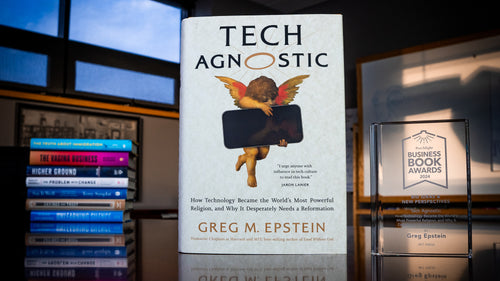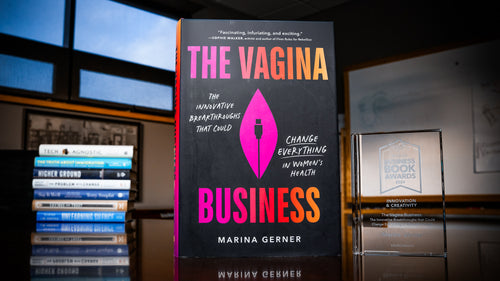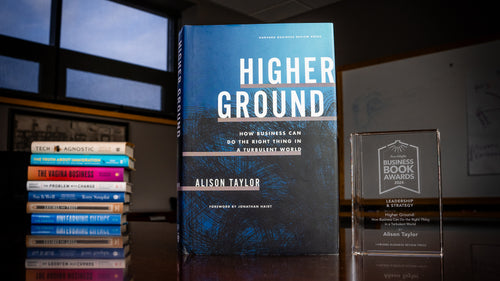Fearless Growth: The New Rules to Stay Competitive, Foster Innovation, and Dominate Your Markets

Uncertainty is Your Friend: How Embracing Uncertainty Can Help Your Business Achieve Fearless Growth
Most everything in business is subject to change, often when you least expect it. And change brings uncertainty, which often manifests as fear, doubt, or paralysis. We don’t know what’s going to happen, so we wait. According to psychologists, we humans are hardwired to dislike uncertainty; it’s in our DNA. In a recent study, researchers discovered that uncertainty is more stressful to humans than knowing that something bad is definitely going to happen.
But what if, instead of being a negative, uncertainty in business was a positive? In my experience, this is often the case. Why? Because uncertainty creates opportunities to pull ahead of the competition and stay ahead. And businesses that are willing to take on more risk and operate in uncertain environments can win a competitive advantage over those that are not.
The following ideas are ways in which fast and unpredictable changes in your business environment can be opportunities to gain competitive advantage, despite the uncertainty.
Marketplace changes create new opportunities for us to surge ahead of competitors. When the world is certain, even mediocre companies can perform adequately. The world plods along much as it always has. Companies serve known customers, providing for well-understood, long-standing needs. The trouble is, in highly certain times, when nothing much is changing, companies tend to become more and more alike. In search of growth, they go after one another’s customers, or drop price to gain market share. Margins get squeezed. It’s okay for everyone, but great for no one.
Uncertain business environments, on the other hand, create the potential for companies to break out of the pack. When something unexpected happens—a new technology, a new competitor, a new customer need, or a change in governmental policy or regulations—it gives alert and prepared companies a chance to speed ahead if they respond in a faster, smarter, and more-adaptive way to make the most of the new situation.
The faster and more surprising the change, the greater the advantage for companies that respond quickly. Company leaders who welcome marketplace changes and think, “How can I exploit this, before my competitors do?” rather than “Let’s hunker down to watch, and hope this goes away,” are able to take fast action, and can make the best of even difficult situations. Managing well in uncertain environments, to minimize risk while taking advantage of changes that occur in the business environment, is an uncommon capability that can be a tremendous source of competitive advantage.
A business unit president I work with was concerned when she noticed that sales in the Midwest region had plummeted in the space of just two months. After a series of conference calls with salespeople in the region, we discovered the reason: A competitor had begun offering same-day delivery, directly targeting all of my client’s best customers. We acted fast, identifying a set of products that my client could reliably deliver in a two-hour timeframe, using company-owned delivery vehicles. The competitor, who was using third-party logistics firms for delivery, couldn’t match this offer, and sales rebounded, surpassing even their former level.
We can take simple steps to be more prepared for the unexpected. Anticipating a wide range of possible future scenarios, and having a frank discussion with other leaders in your firm about what you should do to prepare for the possibilities, is essential to preparing for the unexpected. Of course, we can’t predict the future, but through this type of discussion, it often dawns on us that there are a few “no-brainer” steps we can take to be ready for what might happen. For example, fast-food restaurants that specialize in chicken likely have a plan for how to respond quickly with substitute sources of protein if a fast-spreading virus decimates chicken supplies. And, scenario-planning exercises can help us to become more deliberate in watching for the early warning signals of future market disruption.
The more we proactively change the business environment, the greater control we have over business outcomes and competitive advantage. Martial arts experts know that if you want to be faster than someone with fast reactions, you have to create the situation. Consider how you can shape your business environment to pre-empt an effective competitive response.
One company I know was superb at helping to shape future regulations and industry technical standards—to its own advantage. Another was adept at developing new distribution channels that the competition hadn’t considered, and would have a hard time penetrating quickly. Both companies kept their strategies under wraps during several months of negotiation and preparation with other parties. As a result, other players were caught by surprise, and were slow and relatively ineffective at responding.
We can create new profit streams by reducing the risk and uncertainty for our customers, especially in volatile markets. If your company is good at spotting the opportunities inherent to uncertain business environments, and at managing amidst uncertainty, consider how you can create new sources of growth and profit by reducing the risk of your customers, or even your suppliers. Insurance companies are masters at this, but every company should keep their eyes open for opportunities to do so.
A tire company I know reduced uncertainty for its suppliers by committing to “take or pay” for certain volumes of raw materials each month. In return for this concession, suppliers gave the company lower prices. Even more important, however, was the fact that by reducing supplier risk, the tire company ensured that suppliers would be economically healthy and able to ramp up supplies quickly when the market demanded it. Removing risk for suppliers created a greater ability for the tire company to thrive in an uncertain market.
Customer and market data, combined with artificial intelligence, can dramatically increase our ability to make fast decisions amid risk and uncertainty. Artificial intelligence and data are driving innovations across agriculture, automotive, energy, retail, weather, sports, and nearly every other arena. In many cases, these innovations have transformed the customer experience and brought tremendous new efficiency and value. These innovations also have the potential to reduce risk while increasing speed.
Kabbage specializes in making loans of up to $100,000 to small businesses. The small business market is inherently risky—only about half of small businesses survive their first five years. Small businesses that fail often default on their loans in the process. Kabbage spotted this uncertainty and decided to exploit it. The company built a system to allow small businesses to qualify for loans and receive the funds in minutes—if the companies give Kabbage access to online data that provides a window into the health of their business, and their capacity to repay the loan. This includes UPS data on shipments, eBay and Amazon order data, and even social media data. If the loan applicant has a healthy stream of orders coming in, Kabbage is happy to provide a loan. Kabbage solved a big problem in small business lending by reducing risk and uncertainty, and providing small business with extremely fast access to funding. The company was rewarded for its efforts with a valuation of one billion dollars in late 2015.
People are hardwired to fear uncertainty, but embracing uncertainty is key to growth and innovation. When you deal with uncertainty in a rational and fact-based way, uncertainty can work for, rather than against, you. Having the right risk mentality and moving quickly in uncertain business environments can create a lasting advantage over competitors that are slower to respond. So next time you face a market upheaval, consider how a smart, fast response can create new opportunities for your company.
Excerpted from Fearless Growth: The New Rules to Stay Competitive, Foster Innovation, and Dominate Your Markets by Amanda Seteli.
Published by The Career Press, Inc.
Copyright © 2017 by Amanda Siteli.
All rights reserved.
ABOUT THE AUTHOR
Amanda Setili, author of Fearless Growth: The New Rules to Stay Competitive, Foster Innovation, and Dominate Your Markets, is president of strategy consulting firm Setili & Associates. An internationally acclaimed expert on strategic agility®, she gives her clients—including Coca-Cola, Delta Air Lines, The Home Depot, UPS, and Walmart—unbiased and laser-clear advice on how to respond quickly and intelligently to a changing marketplace.
A past employee of McKinsey & Company and Kimberly-Clark, Setili served as an executive with successful disruptive technology startups in the U.S. and Malaysia. She is a graduate of Vanderbilt University and Harvard Business School and has taught as an adjunct professor at Emory’s Goizueta Business School. To learn more, please visit www.setiliconsulting.com.



